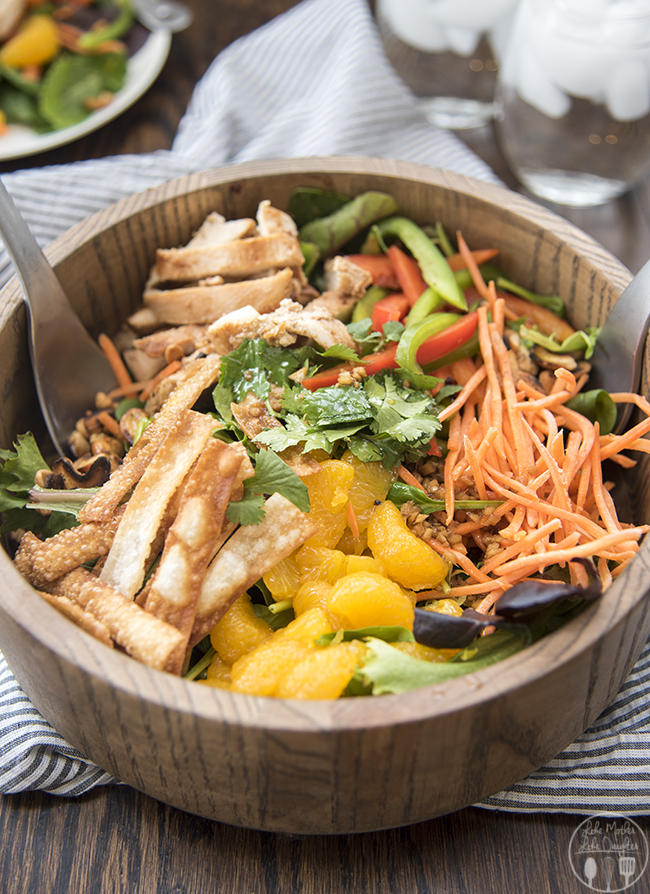
1. The Model Minority Stereotype
The stereotype depicts Asian-Americans as the model minority racial group. Only affluent, educated Asian-Americans are used to perpetuate this stereotype, because they fit the "American Dream" ideology -- living in a posh suburban house with white picket fences and establishing a nuclear family. What may seem like a "positive generalization" is actually a harmful stereotype of a race of people.

One point of the stereotype assumes that all Asians are overachievers. First of all, it holds Asians up to a much higher standard than people of other races, so that an Asian with the same credentials as a White candidate is less likely to be accepted as a student or employee. Second of all, it ignores the existence of failing Asian students. A personal friend of mine was Chinese-American and grew up in the States with a father, a mother, and later, a little brother 10 years her junior. When her family moved to Florida, she was sent to the local public school, which was so dull and slow that it made her seem smart.
Years flew by, and as a teenager, her parents got divorced. Her mother took her and her brother to Chinese buffets very often, a behavior atypical of many Chinese-American families who usually cook meals at home and rarely eat out. Her mother found work as a research technician; her brother went to elementary school; and she developed severe depression, which influenced her school performance and caused her to drop out of high school. Her father decided to send her to China to live with relatives, and after one year, she returned to the United States, looking forward to become a medical transcriptionist. I only knew this friend when she was only 3 to 8 years old. I never met her brother. Her later life was exposed to me through my mother's regular correspondence with her mother over an Internet chat service. Anyway, I hope that this narrative paints a more realistic, multi-dimensional, modern Asian character.
[T]his narrative paints a more realistic, multi-dimensional, modern Asian character.
Another point of the stereotype assumes that too many Asians are considered the "model minority" or "overachievers". This stereotype is particularly harmful, because it is directly related to the Yellow Peril stereotype of the 19th century. Back in the 19th century, people of the white majority felt threatened that the incoming Cantonese-speaking Chinese immigrants were going to take away their jobs and women. The Chinese Exclusion Act was passed to prevent further Chinese immigration, and businesses refused to hire someone who was Chinese. These discriminatory practices forced Chinese Americans to become self-employed in the culinary and laundry trade, thereby perpetuating even more stereotypes of Chinese Americans. In the 20th century, Asian American families were beginning to send their children to most prestigious colleges at a rate higher than the total percentage of Asian American population.
This led to affirmative action proposals to put a cap on the amount of Asian-American applicants, as if Asian-Americans were not supposed to enter top schools at such high numbers. In an ideal world, race should not be a factor in selecting qualified applicants. If 95% of applicants who got accepted to a top university just happened to be Asian American or Asian (foreign students), then let that be so. Sure, university might not be so racially diverse anymore, but at least the university got quality students. Instead of putting a cap on the number of "Asians", I think parents should put more investment in the lives of their children, especially in mathematics, science, technology, and engineering.
2. The Perpetual Foreigner Stereotype
This stereotype depicts the Asian as an exotic species permanently. The person can live in the States for generations, but as long as he cannot pass as "white", he is permanently recognized as a foreigner. Being recognized as a foreigner in one's own land is very debilitating to American-born Asian-Americans. The Asian-American would be confronted with the expectation to speak his "native language" or exhibit "native customs".
American-born Asian Americans also face prejudice from more recent Asian immigrants. Asian immigrants would look at the faces of American-born Asian Americans or Asians adopted by non-Asian families and try to speak an Asian language to them, only to realize that the Asian American does not understand a word. This prejudice that Asian-Americans face is carried over when Asian-Americans want to go to China to teach English. Chinese people would judge the applicant by the looks and choose the White applicant over the Asian applicant because of the presumption of "superior English".
I have personal experience with this stereotype all my life. But I am considered fortunate, as I was actually born in China and could speak Mandarin. I just chose not to speak it in school. The harassment I faced from my peers who expected me to speak Chinese just made me roll my eyes, exclude myself from others, not seek too much attention, and almost resent my Chinese heritage. I stopped speaking Mandarin in the home in 6th grade, and now it has become more of a convenient habit. I still understand 90-95% of spoken conversational Chinese. The other 5-10% includes idiomatic phrases and technical terms.
But I avoid speaking it, not even to my own parents. What originally started out as a desire to correct low self-esteem morphed into a desire to communicate with a language that I knew most fluently. When I found out about "Off The Great Wall" on YouTube, I was so comforted by the satirical take on Chinese-American culture that I appreciated more of my heritage. I took 1-2 years of Chinese school in the United States, when I was in 5th and 6th grades. That taught me the hanyupinyin alphabet, a development created by the modern Communist government to increase literacy. I think it's a relatively late development, because neither of my parents learned it when they were in school. They learned every Chinese character by shape, form, and context. Several years after my brief experience in Chinese school, I decided to take on continuing my Chinese reading and writing education through the Internet.
My continuing education is rather informal. I often use the Yabla Chinese dictionary and maybe Google Translate and maybe my own mother and father to translate something for me. Learning a foreign language, be it Latin American Spanish, American English, or Mainland Chinese, is a gateway to understanding and appreciating the culture. In exchange, I have always helped my parents with English, but that usually comes with hilarious side effects. For example, when I was 8 years old, I had a teacher named "Schwartz". On the first day, I came home from school and told my parents that my teacher's name was "Shee Wa Zi", which sounded like "洗袜子", which meant "wash socks". The Chinese nickname was hilarious.
3. Submissiveness
In America, Asians are portrayed to be submissive, docile, quiet, reserved, and diligent. This stereotype is combined with the "Model Minority" stereotype to create an image that may help the Asian employee early on in his career, but as time passes by, the Asian employee stumbles across the "bamboo ceiling". He simply cannot enter a supervisory role in the workplace, because he is constantly perceived to be submissive and inferior by co-workers and other employers.

4. The Asian Face
The stereotypical East Asian face primarily consists of two squinty eyes with monolids. In reality, there are many different types of East Asian faces. My own mother, for example, is an Asian woman. She has big, round eyes, double eyelids, and high cheekbones. She has a younger sister with big, round eyes, monolids, and somewhat roundish face. She has another younger sister with the stereotypical East Asian features. She has a younger brother who has big, round eyes, double eyelids, and oval face. They are all biological siblings; they just happen to look so starkly different. I don't think it's the monolid that defines Asian eyes; it's the epicanthic fold. Double eyelids do occur naturally but infrequently within the East Asian population.
My father, according to the words of my mother, has the worst Asian features. He has a round face, squinty eyes, monolids, a wide nose, and a wide mouth. Nevertheless, I have all his features, except the nose and mouth. By Chinese standards, my mother would be considered exceptionally attractive, and I would be considered plain. I prefer not to smile too hard, because when I smile, I squint, and all you see are slits for eyes. I don't consider myself unattractive, because I have a very symmetrical face. Non-Asians may think to themselves, "All Asians look the same." But look closely, and you can see the differences. It's called outgroup homogeneity.

5. Chinese-American Cuisine
It took me some time to figure out what makes Chinese-American cuisine "Asian". I think what makes the cuisine "Asian" is exactly what makes it American. General Tso's chicken is just boneless fried chicken in sweet and sour sauce. The deep-fried cooking method is what makes it American. The sweetness is what makes it American. When served with broccoli, the broccoli makes it totally American. Sometimes, Asian-inspired recipes would include mandarin oranges and dried, crunchy noodles in salads and wraps. The creation of Chinese-American cuisine just shows how innovative and flexible people can be.
However, assuming that Chinese-American food is what Chinese Americans eat at home is not so accurate, especially among recent Chinese immigrants in the States. Meat may be anything (pig's feet, chicken feet, pig ear, beef tongue, beef stomach, pork blood curd, kidneys), which may not be the most appetizing to a typical American who eats only the muscle meats of poultry, swine, cattle, and fish. Keep in mind that muscle meats are traditionally regarded by many societies as higher-quality meat that only the affluent can afford to eat. In other words, muscle meat is traditionally a luxury food, not peasant food. Tofu may be part of a platter, but non-Chinese Americans may not like the taste of tofu.
Also, different regions in China have differences for food. Northern Chinese may eat more wheat-based foods, like jiaozi or baozi or mantou and noodles. Southern Chinese may prefer to eat rice instead of noodles. Where my parents and I came from, spicy food is a must in the dishes. Indeed, my mother would create the dishes so spicy that her own Chinese co-workers, who come from other regions in China, would complain about the spiciness! The important thing to take away from this is that palatability varies from person to person. If you want to please a guest or customer who does not share your taste, then you have to adjust the plate to fit the guest's or customer's palate. The guest will be happy; the customer will pay and give high ratings.
 Holidays
Holidays  Girl's Behavior
Girl's Behavior  Guy's Behavior
Guy's Behavior  Flirting
Flirting  Dating
Dating  Relationships
Relationships  Fashion & Beauty
Fashion & Beauty  Health & Fitness
Health & Fitness  Marriage & Weddings
Marriage & Weddings  Shopping & Gifts
Shopping & Gifts  Technology & Internet
Technology & Internet  Break Up & Divorce
Break Up & Divorce  Education & Career
Education & Career  Entertainment & Arts
Entertainment & Arts  Family & Friends
Family & Friends  Food & Beverage
Food & Beverage  Hobbies & Leisure
Hobbies & Leisure  Other
Other  Religion & Spirituality
Religion & Spirituality  Society & Politics
Society & Politics  Sports
Sports  Travel
Travel  Trending & News
Trending & News
Most Helpful Opinions